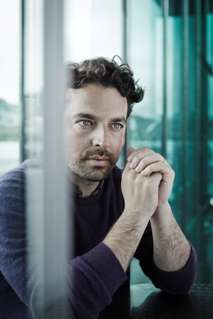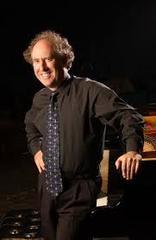|
Back
Miró, Miró, On The Keys New York
David Geffen Hall, Lincoln Center
12/10/2015 - & December 11, 12, 2015
Ludwig van Beethoven: Symphony No. 4, Opus 60
Andrew Norman: Split, For Piano and Orchestra (World Premiere)
Richard Strauss: Till Eulenspiegels lustige Streiche, Opus 28
Jeffrey Kahane (Pianist)
New York Philharmonic Orchestra, James Gaffigan (Conductor)

J. Gaffigan (© Mat Hennek)
The single alteration I would make to this week’s pre-Christmas New York Philharmonic program would be to put Beethoven’s Fourth Symphony last, put Strauss’s Till Eulenspiegel first. Audiences, though, prefer a rip-rousing barn-stormer that a Promethean belly laugh. Strauss was a master architect, a brilliant painter, a terrific story-teller, and, while frequently inspired, more of a great artisan than a great artist. Beethoven reached for the gut...
And the gut doesn’t win the biggest applause.
Enough of personal choices. This concert introduced to this listener two superior talents: conductor James Gaffigan and composer Andrew Norman. Both deserve the most attention.
Mr. Gaffigan, presently conductor of the Lucerne Chamber Orchestra and guest conductor all over the place, is a marvelous figure to watch. I was warned once by a colleague not to pay any attention to what the conductor does, but the effects he creates. Still, the young Mr. Gaffigan gives such wide-open movements up on the platform, he rhythmically is so graceful that he does complement the music.
This is not Bernstein showbiz stuff. Rather, one thinks of the old silhouettes made of Hector Berlioz conducting. Berlioz was probably the first conductor who did more than give the tempo and cue the instruments. He was a marvel on the platform, and Mr. Gaffigan is the same.
How were his relations with the Philharmonic? Beethoven’s Fourth was hardly given the light-hearted levity that one often hears: it was more of a “nature piece” with solo winds given plenty of time to show their sounds.
The tempos were questionable. The Adagio was taken at an Andante pace, which was quite acceptable until he noticeably slowed them down to a laggard tempo for the middle of the movement. The last two movements weren’t charged up, yet one felt a Beethovenian contentment, the same kind of satisfaction that one feels in the Fourth Piano Concerto written at the same time.
The climactic Till is caviar for any conductor, and with a clarinetist like Anthony McGill and a horn-player like Philip Meyers, it ran through its explosive paces.

J. Kahane (© Juilliard.edu)
Still, the one work which made this concert so extraordinary was Split, a piano/orchestra concerto commissioned by the Phil for Andrew Norman, who himself wrote it for the personality of Jeffrey Kahane.
I have never met Mr. Kahane, yet his performances of Mozart are so fluid, fluent, played with such delight, that I imagine (and this was verified by Mr. Norman’s work) that he might be an equally delightful person.
Mr. Norman, who is also an architect, has written a jubilant, complicated, near-30-minute work that was like a painting by Joan Miró. Notes by piano and instruments echoing themselves by fractions, splendid duets (Mr. Kahane and first violist Cynthia Phelps was gorgeous), brass giving vent to Gabrielli-style Baroque anthems, immediately stopped by piano–and by percussion.
That percussion consort, including kick-drums, South American guiro, opera gongs and flower pot (sic), were the catharses to change tempo, change mood. The combinations were different, but the slapsticks were the sharp commands for Mr. Kahane to brake hard, turn the steering wheel, play a variation on top or on bottom of the piano or skip through the notes like it was a Mozart cadenza.
The paradox was that we had many a style here, and some of Mr. Kahane’s work almost had the late romanticism of a Rachmaninoff. But Andrew Norman never let that get too far. On this first hearing–and I’m tempted to go again on Saturday evening–I could hear repetitions of different motifs and strains, But far too much was happening with the Philharmonic to worry about remembrance.
Miró might have been one resemblance–but the more I think of it, Split was like a Calder mobile. Swinging, surrealistic, moving in different directions, colorful, joyous. The piece was more than amiable: it was a riot of goodwill. And Mr. Kahane, its “onlie true begetter” (in Shakespeare’s words) had the humor and terrific digits to vivify Mr, Norman’s vivacious creation.
Harry Rolnick
|